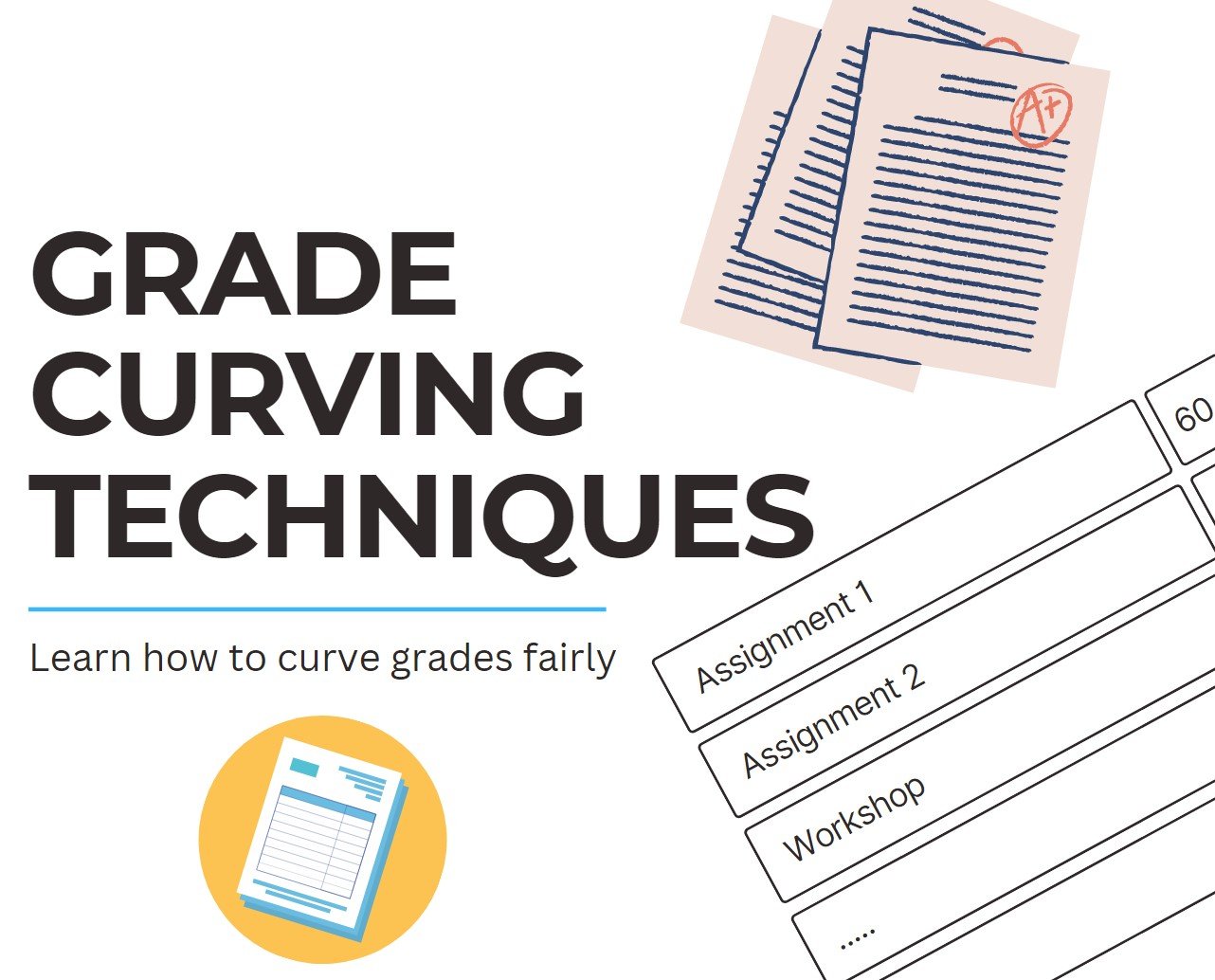Curving grades is a method teachers often use when grading exams and tests. To raise students’ grades, teachers use several curving techniques if they fail an exam or perform poorly on an assignment.
As far as whether or not to curve, that solely depends on the teacher, since no one knows the class better than the teacher. If they think that some questions in the exam or some assignments were out of the scope or too difficult for students, teachers decide to be lenient and curve the exam grades.
Grade Curving Methods
The following are a few curving techniques most commonly used by teachers.
-
Flat Scale Curve
This is one of the simplest methods to curve grades. A flat scale curve is used when a majority of students fail to score well on some specific assignment. In such a case, the teacher adds the same number of points to every student’s grades.
For example, if a majority of students fail to get a decent score in a mathematics assignment that was worth 20 points, the teacher adds 20 points to each student’s grades.
-
Increasing Minimum Score
This method is used when a class or a group of students show massive improvement after being a disaster in the initial assignments. In such cases, teachers increase the minimum score so the overall final grade gets better.
For example, a student scores a ZERO in the first assignment, but in the next two, they perform better and score 80% and 90%.
Normally, their weighted grade should be 56%, but if a teacher decides to curve the grade, they set the minimum score to 40% (so now instead of 0% they get 40%), now their overall grade gets increased to 70%.
NOTE: If you are a teacher, you must check out easy grader for grade calculation.
-
Setting Highest Grade as 100%
After a flat scale curve, this is probably the most used grade curving technique. In this method, the teacher sets the highest score as 100% and increases each student’s grades accordingly.
For example, if the highest grade in the class is 90%, the teacher marks it as 100% and adds the same difference in each student’s grades, so in this case 100-90 = 10. The teacher will give 10% additional points to every student.
-
Bell Curve Method
If we draw a graph of students’ grades in exams, most of the time it forms a Bell curve, i.e a few students score really good, a majority of them score average, and a few of them fail.
When an exam is difficult the brightest of the students score around 80%, the average ones get grades in the 60s range whereas the low scorers are in the 40s range. In such a scenario, if a teacher uses a regular grading scale, no one in the class gets an A, even the highest scorers will be getting a B or B+ whereas the majority will get C or D.
This can be a bit discouraging for the students, so in such cases, a bell curve method is used to award improved grades. In order to do this, the first thing a teacher does is determine the mean grade of the class. This can be done by adding the grades of all students and then dividing them by the total number of students in the class.
Once we have a mean value, we set our grading scale to something in the middle. Let’s say if the mean grade is 60%, we set it to a C.
The next step is to get a point interval in our bell curve, the bigger the interval, the better the grades will be. Assuming we decide our interval to 10 points, so 60+10 = 70% becomes a B and 70+10 = 80% becomes an A.
Alternatives to Grade Curving Mathematically
There are several other ways that teachers use to help students get better grades, like:
- Allowing students to retake exams and improve their score
- Discarding low-scoring assignments, and not including them in the final grades.
- Add an extra assignment/exam to decrease the weightage of a low-scoring assignment.
That is all about grading curving techniques, I hope you’ve found this useful, do let me know in the comment section if you use some other methods to curve grades in exams.

